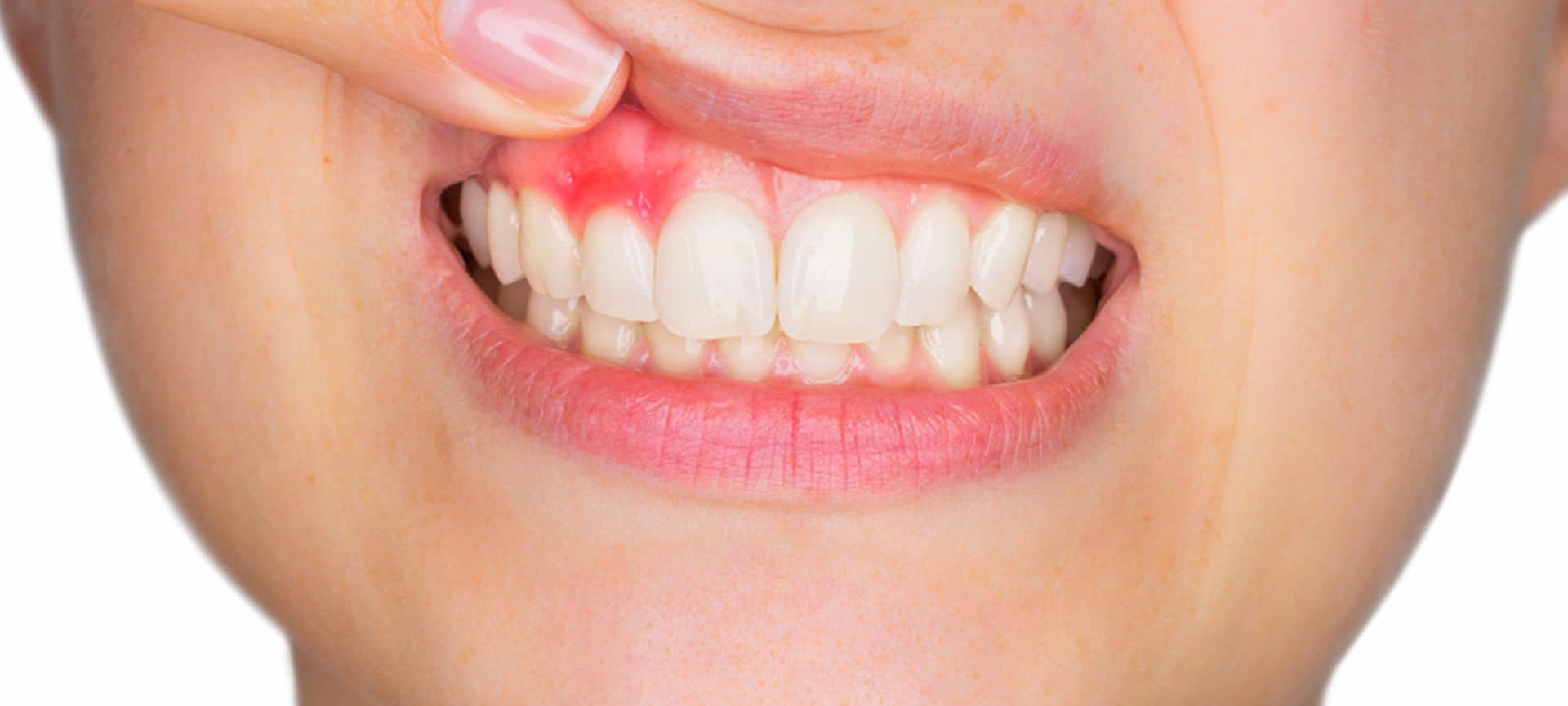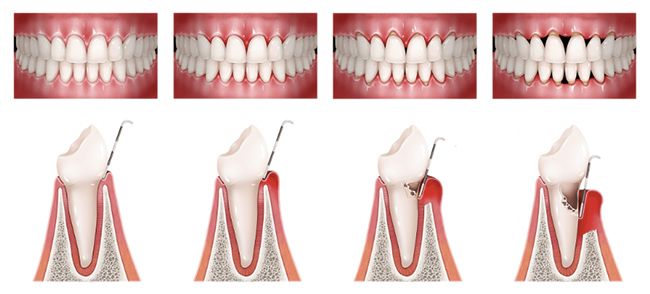Periodontal disease or periodontitis is a chronic infection of the gingiva, meaning that it has been sick a long time. It is slow in evolution and destroys the tissues that support the teeth. It’s caused by the accumulation of dentobacterial plaque. If this plaque is not removed properly with the tooth brush and floss, it begins to build up tartar. This stage is called gingivitis and is characterized by the inflammation and bleeding of the gingiva. Its treatment is relatively simple and with a visit to the periodontist its progress can be stopped.

Periodontal Desease


When the tartar has been accumulating for a long time, the gingiva starts to separates from the tooth forming the periodontal pocket and begins to gradually loose the bone that holds the tooth. At this stage, it stops being called gingivitis and evolves to become periodontitis. Periodontitis continues to progress through the years until finally the tooth is lost. Its progress is usually slow, painless and it frequently causes discomfort only in its last stage.
Common symptoms:
- Constant bad breath
- Redness and inflammation of the gingiva
- Spontaneous bleeding
- Receding gums or teeth that look longer than normal
- Loose or repositioning teeth
- Sensitivity in teeth
Factors that can aggravate it:
- Systemic diseases such as diabetes. It delays the response of the periodontal tissues to the infections caused by the dentobacterial plaque.
- Pregnancy. The inflammatory gingival response is increased by the production of hormones.
- Smoking. It increases gingival inflammation and decreases the healing capacity.
- Fixed and removable prostheses. They hinder proper dental hygiene and promote the accumulation of dental plaque.
- Misaligned teeth. Irregular dental alignment can make it difficult to clean.
- Braces. They tend to retain dentobacterial plaque and food residues.
- Bruxism and clenching teeth. Promotes faster bone resorption.
Treatment
Since the disease is caused by bacteria inside the periodontal pocket, it cannot be removed with antibiotics, rinsing, brushing or flossing. It is necessary to mechanically remove all food, tartar and bacteria that irritate the gum.
After diagnosis, the treatment of periodontal disease is treated in two ways: by curettage or scaling and root planning, or through periodontal surgery.
Improving oral hygiene during and after treatment is essential for any periodontal treatment to work successfully.
Prevention
People over the age of 35 statistically lose more teeth due to periodontal disease than tooth decay. The best way to prevent it is by having a correct oral hygiene routine and by visiting a periodontist for a periodontal checkup and teeth cleaning every six months.
FAQ
Is the periodontal disease common?
Research studies have shown that gingivitis affects almost the entire population, both infant and adult. Although periodontitis barely affects children, one in two adults over 35 years of age has or has had periodontal disease.
How should a healthy gum look like?
The healthy gingiva has a firm texture that varies from pale pink to a darker color depending on the pigmentation of the skin. It completely covers the root of the tooth and fills the space between the teeth called papilla. Also, healthy gingiva will show no bleeding when brushing.
Can certain types of food cause periodontal disease?
Unlike tooth decay, the type of food does not play an important role in gum health. However, certain foods such as raw fruits and vegetables have a sweeping effect on the dentobacterial plaque that prevents the gum from becoming inflamed.
Can smoking cause periodontal disease?
Although tobacco is not able to produce periodontal disease on its own, it aggravates its evolution and reduces the effectiveness of treatment. Smoking decrease the defensive capacity against bacteria, the oxygen levels and the proper blood flow of gum tissues. Furthermore, it increases inflammation and alveolar bone resorption.
Is periodontal disease contagious?
Oral bacteria can be transmitted but not periodontal disease. It requires an infectious process of slow evolution where factors such as the state of the immune system and habits of dental hygiene come into play.
What could happen if gum problems are not treated?
Periodontal disease is a progressive, painless infection. Delaying treatment can cause bone and dental loss, bad breath, bleeding gums, abscesses and the possibility to develop other conditions related to periodontal bacteria like diabetes, hearth isquemic diseases, arthritis and premature birth during pregnancy.
Are women at a greater risk of suffering periodontal disease?
It is often believed that women are at a greater risk of suffering periodontal disease, however, it has not been proven. It is true though that certain stages in a woman’s life when strong hormonal changes occur, such as pregnancy and menopause, produce temporary changes in the gums that require special care.
If I have periodontal disease, will I need surgery?
Not all patients with periodontal disease need surgery. If it’s treated in time, it can be controlled with less invasive treatments such as curettage. However, more advanced periodontitis will require pocket reduction or bone surgery.
If I have periodontitis, can my teeth be saved?
Advances in the treatment of periodontitis allow a successful treatment on almost all teeth. However, when the disease is fully advanced and signs of pain and abscesses begin to appear, the disease is in its final stages. In this case, treatment options are limited.
Can I get dental implants if I have periodontal disease?
Yes, as long as the periodontal disease is controlled first. The treatment and its duration will depend on each particular case.
Is it possible to regenerate the lost bone around the teeth?
Yes, it is possible to regenerate the bone around the teeth. Biomaterials such as bones, membranes and proteins are available for this purpose. Nonetheless, it is a delicate procedure that requires specific indications.

